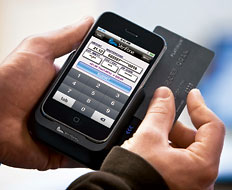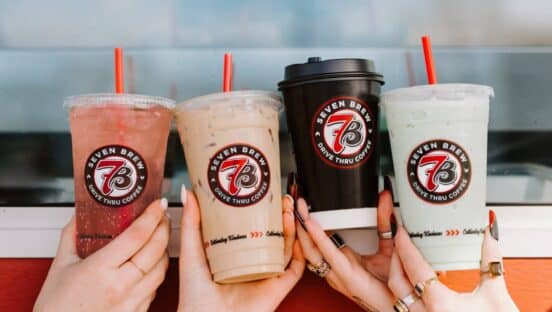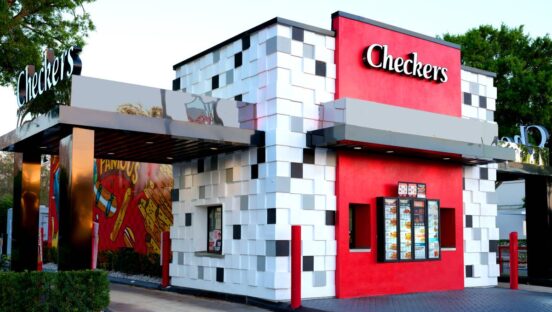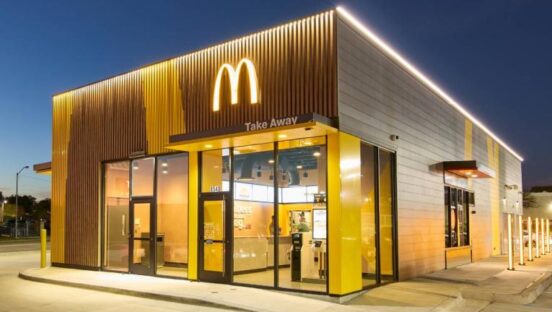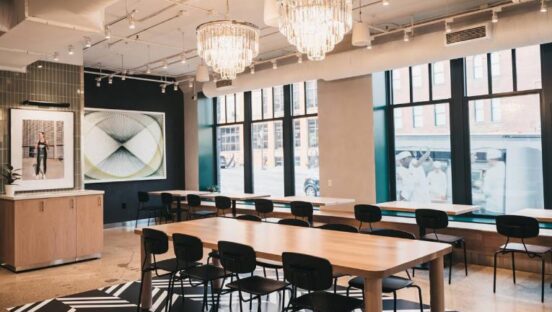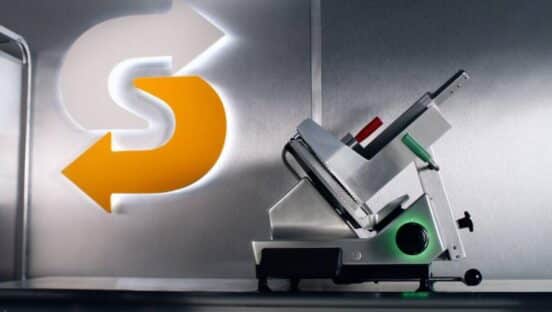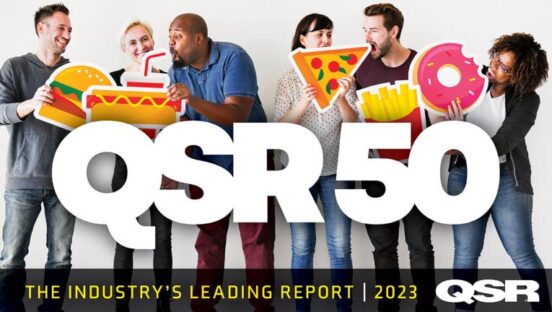Every two years, QSR’s Applied Technology Awards recognize the best innovations that improve and enhance the restaurant experience for operators, staff, and customers. The 2010 edition is no different, featuring an influx of digital media, bottom line–enhancing solutions, and eco-friendly programs that define a forward-charging industry and showcase the compelling merger of technology and real-world applications.
The Criteria: Technological innovations having a positive effect on productivity and efficiency.
The Fryer Monitoring system provides data on proper oil handling, fryer utilization, and control. The data can then be used to institute a proper on/off schedule, ensure correct filtration, provide maintenance notices, identify training opportunities, and establish equipment run time—all of which breeds better food quality, proper oil utilization, and longer-lasting fryers.
Consolidated Restaurants, a 10-unit Wendy’s franchisee based in Irvine, California, began using the Remote Fryer Monitoring system in March 2009. CFO Kent Bickell says the system allows operators to know on a day-of basis whether each fryer was filtered properly.
“This leads to a much more consistent frying oil and extends the life of the oil as well,” Bickell says.
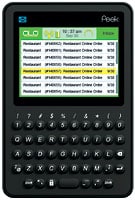 Order Panda by GoMobo
Order Panda by GoMoboGoMobo teamed with 100 Panda Express stores to unveil Order Panda in February 2010. With OLO, Panda Express restaurants can receive prepaid, off-premise orders without adding an extra phone line or Internet connection.
While GoMobo found many restaurants excited by the benefits of off-premise ordering, many remained confused on execution. The OLO, GoMobo Takeout CEO Noah Glass says, spurs takeout sales with an easy-to-use application, can help restaurants establish an e-commerce presence, and enables location-based transactions.
“The OLO device locks on to the register,” Glass says. “It rings and flashes when a customer places an order, so the restaurant crew can have the order ready and waiting when the customer arrives.”
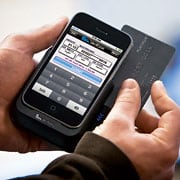 VeriFone’s PAYware Mobile
VeriFone’s PAYware MobileGiven the iPhone’s immense popularity, a credit card payment app was only a matter of time.
PAYware Mobile’s card encryption sleeve, which snaps onto the iPhone, transforms the popular gadget into a secure card-acceptance device. For portable outlets (a food cart at the park, for instance) or delivery, PAYware Mobile offers a solution for expanding sales.
“Once you provide card payment in areas where it hasn’t been feasible previously, it opens up a lot of creativity,” VeriFone CEO Doug Bergeron says.
Released in December, PAYware Mobile requires iPhone users to obtain VeriFone’s encryption sleeve, the PAYware Mobile app (available on iTunes), a service agreement for VeriFone’s gateway, and a merchant account with a card processor.
A team effort between Jack in the Box, franchisees, and Dedica Design, the LRM website includes information on building sales, competitive intrusion, restaurant reimaging, community involvement, and the Jack in the Box style guide, which allows operators to print stationary, business cards, and banners.
Since the Toolkit’s January 2009 debut, operators such as Atour Eyvazian have taken charge of sales results and local marketing plans as well as streamlined and accelerated their ordering of promotional materials.
“The toolkit has everything an operator needs to promote his business,” says Eyvazian, who oversees 49 Jack in the Box stores in the Houston area. “I make one click and all of my restaurants are taken care of, which saves time and money.”
[pagebreak]
The Criteria: Innovations that have quantitatively improved the sustainability of a store and contributed to the efficiency of a store or system.
The Utility Manager software platform generates more than 250 user-friendly reports to help operators understand their energy consumption and its impact on the environment, including carbon emissions, cost per employee, and facility benchmarking. With a tool to actively manage energy spending and use, operators can monitor and implement changes.
Tracy Voyles, utility accountant at Rita Restaurant Corp., operators of 39 Don Pablo’s restaurants, values the system’s at-your-fingertips filing and budgeting features, which can be used in one location or across a multiunit operation. The system also calculates cost avoidance and verifies bill accuracy.
 Subway’s Salad Bowls
Subway’s Salad BowlsAs Subway looked to improve the lid fit of its existing salad bowls, attention soon shifted to altering the bowl’s materials from OPS to PET, the most recycled plastic, and including 10 percent post-consumer resin in the bowl and lid (a number that has since risen to 25 percent).
Subway and PWP then reduced material usage, later packing the bowls and lids into one case that allowed Subway to remove excess shipper cases from the system—all without impacting the restaurant’s current salad formula. The changes add up, says Subway’s packaging technologist Michael Fox: 1.7 million pounds of raw material salvaged; 17 truckloads diverted; and 2,792 trees, 5,586 barrels of oil, and 272,663 gallons of gas saved.
Subway’s degreasers and glass cleaners were traditionally dispersed to stores in oversized plastic jugs primarily filled with water. With SSDC’s help, Subway outlets now receive a reusable spray bottle and strips soaked with the concentrated cleaning chemical.
The biodegradable strips hug the nozzle inside the bottle and mix with water to create a CARB-compliant, noncorrosive solution manufactured without the use of phosphates or ammonia. Since its 2009 implementation, Subway has eliminated more than 105 truckloads, reduced its CO2 output by 3,835 metric tons, and delighted its operators.
“The new solution is cleaner and easier to use and takes up far less space; it makes complete sense,” Subway franchisee Bob Levand says.
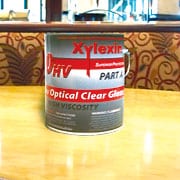 Supplier: Mirage Products
Supplier: Mirage ProductsAfter 18 months of testing to find the most durable protective coating to remove stains and refresh a table’s look, Xylexin proved a winner for Mirage Products. The USDA-compliant coating does not discolor, is chemical resistant, and is available in a variety of colors and finishes.
Used in Cheesecake Factory restaurants throughout the country, Xylexin helps operators salvage tables they might otherwise replace. The coating simplifies cleaning of tabletops, refreshes their looks, and can be applied overnight, as it only needs four hours to chemically bond and seal.
“No chemicals stain or penetrate Xylexin—they all come off,” Mirage Products’ president John Horne says.
[pagebreak]
The Criteria: Technologies in direct contact with consumers that have increased customer convenience or service.
 Supplier: pcAmerica (POS); Mercury Payment Systems (processor); ELO (touchscreens)
Supplier: pcAmerica (POS); Mercury Payment Systems (processor); ELO (touchscreens)Using POS terminals, a POS WebPortal, a loyalty processor, and a customer-loyalty website hosted at myTasti.com, the TastiRewards suite of applications ties system-wide sales data to loyalty activity and automated social network message posting. Customers can earn points by purchasing product, registering their TreatCard, and enabling the system to automatically post to their social networking accounts, a feature that enables Tasti D-Lite to measure impressions, click-through, and redemption rates, and drive future menu and flavor decisions.
“TastiRewards, TastiFlavor alerts, Foursquare specials, loyalty cards, gift cards—all of these have been integrated into a very easy-to-use format and work together to augment each program,” Tasti D-Lite operator Joe Bullock says.
Burger Studio customers customize their burgers with more than 30 topping options. As a user selects options, the burger builds on screen to visually represent the meal. Once the order is complete, the kiosk, made from sustainable materials and featuring Energy Star–compliant technology, prints a customer receipt while another order ticket prints in the kitchen.
While utilizing touch-screen ordering and customization, both Gen Y favorites, Burger Studio also improves service times, which inspired the University of Delaware to install two kiosks at its busiest food court location last fall.
“The style and concept of this design feeds into our clientele and combines customization without sacrificing speed of service,” says Ryan Boyer, marketing manager for the university’s dining services.
A soup and salad buffet with 114 U.S. outlets, Sweet Tomatoes (known in some parts as Souplantation) began using Facebook in February 2009 to bridge the gap between its online and offline experience. The brand’s goals remain simple: increase engagement to bolster brand awareness, gain guest insights on products, and provide opportunities for interaction. The page has addressed more than 300 negative experience issues to date and provided useful insight on enhancing the restaurant experience for guests.
“We start conversations, listen to what our guests have to say, and really try to improve the experience for those who visit our restaurants,” Sweet Tomatoes’ senior manager Jill Trecker says, adding that the restaurant has nearly 50,000 fans without any strategic campaign to drive traffic.
QSR recognizes innovations that enhance the workplace experience for staff members:
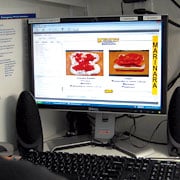 Supplier: Sysdine
Supplier: SysdineIn 2009, Texas-based SMART Restaurant Group, a 10-unit Which Wich franchisee, developed a multifaceted employee training tool in conjunction with Sysdine to help identify qualified employees as well as train, test, and track existing team members. SMART then added iPods to the mix: After viewing modules on a PC, employees can report to a station and watch a related 30–120-second video on the iPod enabling immediate, hands-on instruction.
“The iPod is a handy tool for managers to train what is needed, where it is needed, when it is needed,” SMART Restaurant Group president TJ Schier says, adding that customer satisfaction, employee retention, and store sales have all benefited from the new training.
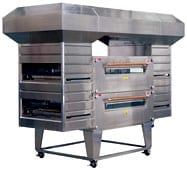 Supplier: Wolfe Electric
Supplier: Wolfe ElectricBy lowering exhaust rates and keeping heat and grease-laden vapors from entering the kitchen, the AVI Hood System helps cool the kitchen, resulting in lower utility costs and a more comfortable workplace. The hood is estimated to save about $5,000 during the first year and $1,000 in subsequent years.
Glen Davis of RPM Pizza, which operates 135 Domino’s Pizza locations across the South, tested the hood with positive results at a trio of his establishments. He found a cleaner physical store, a cooler, comfier kitchen, and increased energy efficiency.
“All things that help our bottom line and ability to serve the customer,” Davis says.
[pagebreak]
The Criteria: New to the 2010 Applied Tech Awards, menuboards must bring a novel innovation into the marketplace and claim a distinguishing feature.
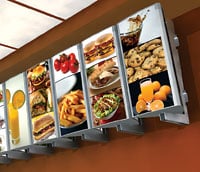 ION’s LED Light Engine
ION’s LED Light EngineION’s LED-arrays for Menu Boards can withstand greater temperature ranges, last up to 100,000 hours, and boast a lifespan of 8.2 years, four times that of the fluorescent lamps found in most quick-serve applications. The LED-arrays also contain no mercury, heavy metals, toxic gases, or hazardous materials, and produce no harmful UV or Infrared radiation, which greatly reduces the fading of graphics.
Japanese eatery Yoshinoya began using menuboards from LED Concepts with ION light engines last August at its new restaurants and is retrofitting existing locations.
“The new menuboards help reduce building heat load and decrease air conditioning costs. At the same time, it lowers energy consumption and reduces service maintenance cost,” Yoshinoya America vice president Scot Hobert says.
ParTech’s digital menuboard, which allows for horizontal or vertical orientation, pulls menu info from an existing POS database in near real-time to display updated price and specials. Wooed by the potential and frustrated with the limiting, costly nature of static menuboards, Cereal Bowl began using ParTech’s digital menuboard at its Washington, D.C., and New Jersey outlets in 2010.
“The signage allows us to daypart our messaging as well as the convenience and flexibility to make changes on the spot,” Cereal Bowl COO Michael Glassman says. “Individual store operators, who better have their fingers on the pulse of local consumers, can then push the messaging they need to produce higher sales.”
The KFC Digital Menuboard Network provides a dynamic, centrally controlled format for communicating product information, featured items, and pricing. A Wireless Ronin control center monitors every menuboard, which ensures accurate execution and limits human error. The network also decreased the costs and time associated with new product launches, improved messaging compliance, and enhanced the customer experience.
“With this system, you can sell what you want, when you want, for what you want,” KFC director Chris Fuller says.
KFC continues to roll out additional locations on a city-by-city basis. Some 176 restaurants are already on the network.
As a drive-thru outlet, Swiss Farms, which operates 13 corporate stores in Delaware and Pennsylvania, faces the challenge of conveying its full array of offerings to consumers. Digital signage solves the problem in a vibrant, visually appealing manner.
It is the system’s future potential, however, that truly excites. Swiss Farms’ rep Chris Gray says the company is working to integrate weather data that will trigger promotional content based on temperature (hot weather will advertise cases of water, for instance) as well as implementing an RFID loyalty system to identify customers and target personalized content to them based on shopping habits.
In addition to displaying content in HD on menuboards, POP boards, and order confirmation displays, LG Electronics’ LCD monitor allows users to update content remotely in real time, a benefit Minnesota-based Wendy’s franchisee FourCrown was eager to utilize.
FourCrown teamed with LG and longtime partner WAND, which works with operators to develop digital signage content, to overhaul its menuboards. With remotely controlled monitors, store owners present customers updated content in dynamic, colorful, and convenient clarity.
“The inclusion of digital menuboards not only improved overall customer satisfaction but reduced perceived wait times and increased sales across WAND’s restaurant network,” LG Electronics vice president Jeff Dowell says.

